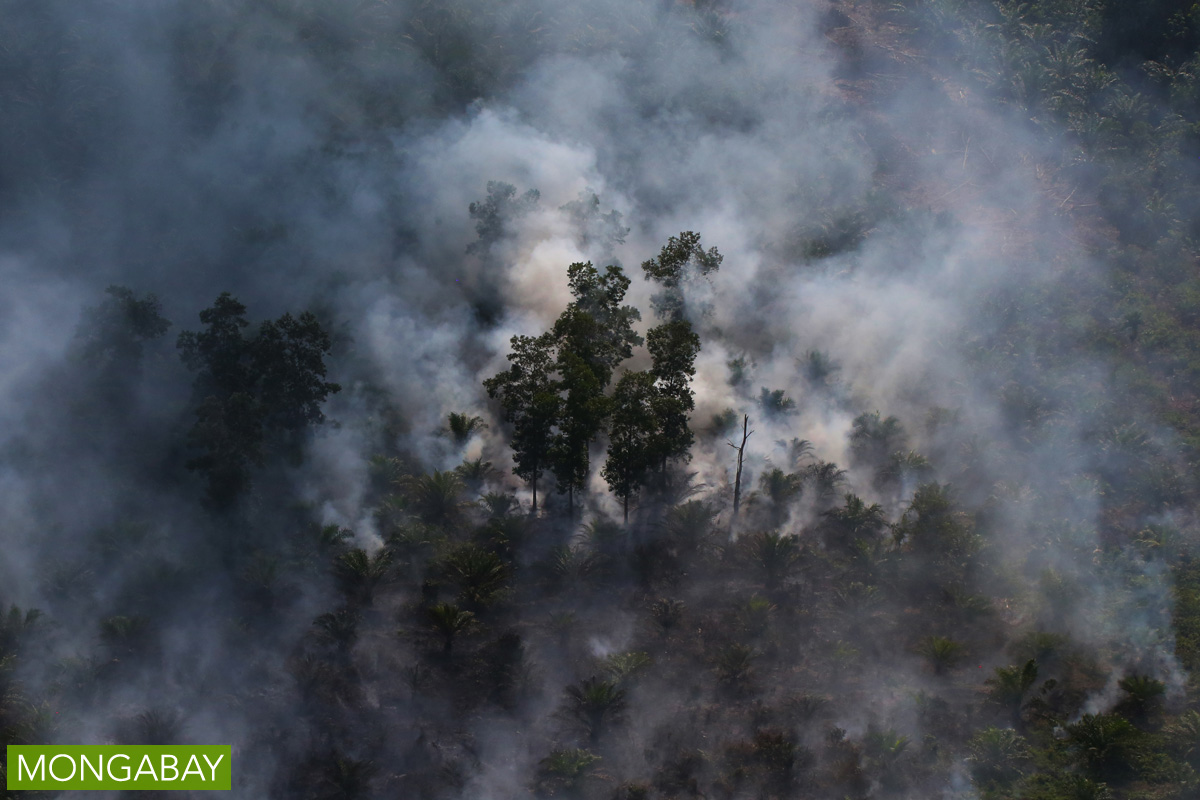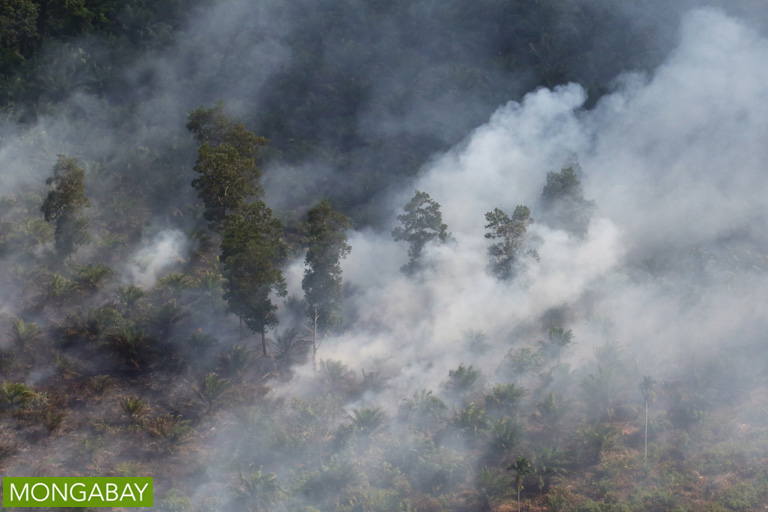- Residents are still digging canals to drain peatlands, which dries out the soil and makes it prone to burning in the dry season.
- Villagers near pulp and paper supplier PT Bumi Mekar Hijau’s concession, much of which burned last year, say they are upset with the company.
- A small number of residents have been enlisted to serve as part of a Fire Care Community Group to patrol the area, but a local official says it needs to be expanded.
Indonesia’s Ogan Komering Ilir was an epicenter of last year’s disastrous forest and peatland fires. It is one of four districts in which the newly created Peatland Restoration Agency is undertaking a pilot project. Indonesia’s vast peat swamp zones have been widely drained and dried by palm oil and pulpwood interests, so the agency intends to rewett 2.6 million hectares of peat — an area the size of Rwanda — in order to prevent another haze crisis.
Over three days recently in Ogan Komering Ilir’s Cengal subdistrict, Mongabay found that a number of contributing factors to last year’s crisis remained unresolved.
In 2015, the fires became a national emergency, polluting the air above the archipelagic country and its neighbors, sickening half a million people, pumping a massive amount of carbon into the atmosphere and, according to the World Bank, costing Indonesia $16 billion.
But last week in Cengal, residents of Talang Petai hamlet were draining a deep peatland so that an oft-flooded road could stay dry during the rainy season. Part of a peat forest was also being cleared for rice cultivation.
The hamlet is situated near the timber plantations of PT Bumi Mekar Hijau, an Asia Pulp & Paper (APP) supplier which was sued by the government for causing fires. Supriyana, chief of Talang Petai, said residents were in desperate need of space to plant rice because too much land had been given over to the company.
“We are afraid to farm rice near the concession because if the company’s land burns, our paddies will burn too,” Supriyana told Mongabay.


Peat fires can start for a number of reasons. Though illegal in most cases, slash-and-burn practices are common among farmers and agribusinesses because it is the cheapest way to clear land. Fires can also arise from something as simple as a campfire or a discarded cigarette, or be set intentionally by villagers seeking revenge against a company they feel has wronged them.
“Most likely, [last year’s] fires were caused by the activities of people near the coast who fish or practice aquaculture,” Supriyana ventured.
“Since the [PT BMH] concession was established, the peat dries out much faster during the dry season.”
Fires burned 26% of APP’s planted area in South Sumatra province last year, a coalition of NGOs reported in February.

Elsewhere in Cengal, 15 residents of Ulak Kedongong have been enlisted by PT BMH to serve as a Fire Care Community Group. The villagers are paid 1.5 million rupiah ($114) per month and provided equipment with which they are expected to stamp out fires in the area.
Saryadi, chief of Ulak Kedongong said the group needed to be expanded. “Ideally there would be 150 members,” he told Mongabay. “It’s very difficult for even 25 people to prevent and overcome peat fires, especially when the company uses so much land.”
Saryadi said the villagers had a problem with PT BMH. The company had failed to keep its promise to allocate small plots of land to local people, he said.
Asked whether any residents had deliberately set fire to PT BMH’s concession, he said, “That’s impossible. You want to go to jail? Besides, we’re the ones who suffer if a fire spreads around here.”

Another problem, he added, was that a big chunk of Ulak Kedongong’s land was improperly zoned as belonging to the state, with the effect of eroding residents’ feeling of having a stake in it.
“If the land is given to the community, they will care more about maintaining the peatlands,” he said. “We are waiting for [President Joko Widodo] to keep his promise of giving land to the peasants, including us.”
Citations:
Taufik Wijaya. “Mungkinkah, Tahun Ini Gambut di OKI Tidak Terbakar?” Mongabay-Indonesia. 29 June 2016.
